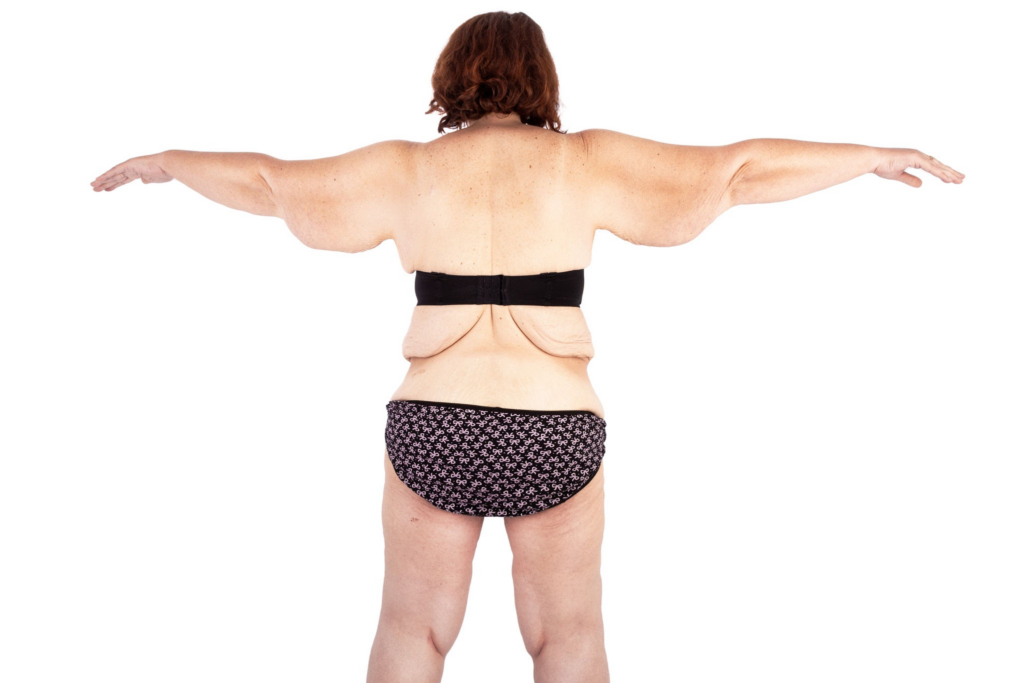Embarking on the journey of a mommy makeover is a significant step towards reclaiming your body and confidence after pregnancy and childbirth. This transformative set of procedures can help address common post-pregnancy concerns, leading to remarkable aesthetic improvements. However, understanding the recovery process is just as crucial as the decision to undergo the surgery itself. A key question many women have as they plan their recovery and future activities is: “When can I travel after a mommy makeover?”
Travel, whether for leisure, work, or family, is an integral part of many lives. Post-surgery, your body will need time to heal, and certain activities, including travel, must be approached with caution. This comprehensive guide will walk you through the typical mommy makeover recovery timeline, factors influencing your readiness to travel, essential preparations, and critical considerations to ensure your journey is safe and supports your healing process. We’ll empower you with the knowledge needed to make informed decisions and ensure your post-makeover travels are as smooth and comfortable as possible.

Sommario
Understanding the Mommy Makeover Procedure
A mommy makeover is not a single surgery but rather a combination of cosmetic procedures tailored to an individual’s specific needs. It typically addresses changes to the breasts, abdomen, and often other areas like the hips or thighs that commonly occur after pregnancy and breastfeeding. The most frequent components include a tummy tuck (abdominoplasty), breast augmentation, breast lift (mastopexy), and liposuction. Each of these procedures, while effective in achieving aesthetic goals, impacts the body in different ways and contributes to the overall recovery timeline.
Tummy Tuck (Abdominoplasty): This procedure removes excess skin and fat from the abdomen and tightens the underlying abdominal muscles. The incision typically runs from hip to hip, and recovery involves significant swelling, discomfort, and restrictions on core movements. The tightening of the muscles can make standing upright and moving difficult in the initial weeks.
Breast Augmentation/Lift: Breast augmentation involves placing implants to increase breast volume, while a breast lift reshapes and elevates sagging breasts. Sometimes, both are performed. Recovery includes managing pain, swelling, and limitations on arm movements to protect the healing tissues and incisions.
Liposuzione: This procedure removes localized fat deposits from various areas of the body. While less invasive than a tummy tuck, liposuction still causes bruising, swelling, and requires the use of compression garments to aid healing and reduce fluid accumulation.
The cumulative effect of these procedures means that a mommy makeover is a significant surgery requiring substantial recovery time. Your body will be healing from multiple surgical sites simultaneously, leading to general fatigue, swelling, bruising, and discomfort. Understanding these physical impacts is fundamental to appreciating why travel readiness is a critical consideration during your recuperation period.

Recovery Timeline and Milestones
The mommy makeover recovery journey is unique for everyone, but there are general milestones that provide a framework for what to expect. Patience and adherence to your surgeon’s post-operative instructions are paramount for a successful outcome and safe return to normal activities, including travel.
Immediate Post-Operative Period (Day 1-7)
This is the most critical phase of recovery. You will experience significant pain, swelling, and bruising. Drains may be in place to collect fluid, and compression garments will be worn. Movement will be limited, and you’ll need assistance with daily tasks. Rest is essential, and strenuous activity, including extended walking or sitting, is strictly prohibited. You will likely be on pain medication during this time. Travel is absolutely not recommended.
First Week (Days 7-14)
While pain may begin to subside, discomfort will still be present. Drains are usually removed during this week. Swelling and bruising will persist. Light walking is encouraged to promote circulation, but prolonged sitting or standing is still discouraged. You will continue to wear compression garments. Air travel and long car journeys are still highly risky due to the risk of DVT (deep vein thrombosis) and general discomfort.
Second to Fourth Week (Weeks 2-4)
Energy levels typically begin to improve. Most patients can perform light daily activities with more ease. Swelling gradually decreases, though it will remain. Pain medication may no longer be needed as frequently. You can increase walking duration, but heavy lifting and strenuous exercise are still off-limits. Short, local car trips might be feasible, but longer travel, especially flying, is generally still not advised without explicit medical clearance due to DVT risk and the need for frequent movement.
Fifth to Eighth Week (Weeks 5-8)
By this stage, many patients feel significantly better and can resume more normal activities, albeit gradually. Most swelling will have resolved, though internal healing continues for several months. Light exercise can be reintroduced. This period is often the earliest your surgeon might consider approving certain types of travel, depending on your individual healing progress and the nature of the travel.
Note: Insert a timeline infographic here detailing the typical recovery stages and when various activities might be considered.
Factors Influencing Travel Readiness
Deciding when it’s safe to travel after a mommy makeover involves more than just a calendar date. Several critical factors must be considered, each playing a vital role in ensuring your safety and optimal recovery.
Personal Health and Healing Progress
Your body’s unique healing capacity is the most significant determinant of your travel readiness. Everyone recovers differently, and what’s safe for one person might not be for another. It’s crucial to monitor your body’s signals closely. Signs of good healing include incisions that are clean and closed, minimal or no pain, decreasing swelling, and improved mobility. You should be able to move comfortably without pulling or straining and manage your own personal care.
Conversely, red flags indicating you need more recovery time include persistent or worsening pain, excessive swelling, redness or warmth around incisions (signs of infection), fever, pus discharge, or any new or unusual symptoms. If you experience dizziness, lightheadedness, shortness of breath, or calf pain, seek immediate medical attention, as these could be signs of serious complications like a blood clot. Do not consider travel until all such warning signs have resolved and you have received direct clearance from your surgeon. Rushing this process can lead to complications that prolong your overall recovery and potentially compromise your surgical results.
Type of Travel Considerations
Not all travel is created equal when you’re recovering. The mode, duration, and conditions of your journey significantly impact the risks and comfort levels.
- Short Trips (Car Travel): For local errands or short car rides (1-2 hours), you might be cleared relatively early (e.g., 2-3 weeks post-op) as long as you can comfortably get in and out of the car, adjust your position, and don’t need to drive yourself. Ensure frequent stops for stretching and walking to prevent stiffness and reduce DVT risk. A comfortable pillow or cushion for your abdomen can be invaluable.
- Long-Haul Flights (Air Travel): This is the most challenging type of travel. The primary concerns are the increased risk of deep vein thrombosis (DVT) due to prolonged immobility in a confined space, changes in cabin pressure potentially affecting swelling, and limited access to immediate medical care. Most surgeons recommend waiting at least 4-6 weeks, and often longer (up to 3 months for very long flights), before undertaking air travel. Even when cleared, specific precautions like wearing compression stockings, regular walking in the aisle, and staying hydrated are essential.
- Cruise Travel: Similar to long-haul flights, cruises involve prolonged periods of relative inactivity and a lack of immediate, high-level medical facilities. Consider the timing carefully, especially if you plan to partake in activities onboard or at ports. The rocking motion of a ship can also be unsettling post-surgery.
Always discuss your specific travel plans with your surgeon, detailing the duration, mode of transport, and your intended activities at your destination. They can provide tailored advice based on your recovery.
Autorizzazione medica
The most important factor determining your travel readiness is explicit medical clearance from your plastic surgeon. This is not optional; it is a critical step to ensure your safety and optimal recovery.
Role of Follow-up Appointments: Your surgeon will schedule several follow-up appointments during your recovery. These visits are vital for monitoring your healing progress, checking incision sites, assessing swelling, and addressing any concerns. During these appointments, your surgeon will evaluate your overall health and specifically discuss your readiness for various activities, including travel. Do not make travel plans without having this direct conversation.
What to Discuss with Your Surgeon: When discussing travel, be transparent about your plans. Inform them of:
- Your intended travel dates.
- The mode of transport (car, plane, train).
- The duration of the journey.
- Your destination and the availability of medical facilities there.
- Any planned activities at your destination (e.g., swimming, sightseeing, lifting bags).
Your surgeon may recommend specific precautions, such as wearing compression garments during the flight, taking specific medications, or providing a letter for airline security if you have implants or other medical devices. They might also advise against travel if there are any signs of complications or if your healing is progressing slower than expected.
Potential Risks of Early Travel
Traveling too soon after a mommy makeover can introduce several complications that can significantly impact your recovery and overall results. Understanding these risks underscores the importance of patience and adherence to medical advice.
- Deep Vein Thrombosis (DVT) and Pulmonary Embolism (PE): The most serious risk of early travel, especially air travel, is the formation of blood clots in the legs (DVT), which can dislodge and travel to the lungs (PE), potentially being fatal. Surgery itself increases DVT risk, and prolonged immobility during travel further elevates it.
- Increased Swelling and Fluid Accumulation (Seroma): Changes in cabin pressure during flights can exacerbate swelling and increase the likelihood of seroma formation (a collection of fluid under the skin), which may require drainage.
- Infezione: Travel exposes you to more germs, and your immune system may be temporarily compromised post-surgery. Incisions are vulnerable to infection, which can delay healing and compromise results.
- Wound Dehiscence: Straining, lifting, or sudden movements during travel can put stress on healing incisions, potentially causing them to separate (dehiscence), requiring further medical intervention.
- Dolore e disagio: Even if no major complications arise, traveling too soon can be incredibly uncomfortable, especially with fresh incisions and residual swelling. This discomfort can turn what should be an enjoyable trip into a painful ordeal.
Warning Signs to Watch For During and After Travel: Be vigilant for any new or worsening symptoms. Signs of DVT include calf pain, swelling, warmth, or redness. Signs of PE include sudden shortness of breath, chest pain, rapid heart rate, or coughing. Other red flags include increased pain, redness, or discharge from incision sites, fever, or any general feeling of unwellness. If you experience any of these symptoms, seek immediate medical attention, even if you are abroad. Having travel insurance that covers medical emergencies is highly recommended.

Preparing for Travel After a Mommy Makeover
Once you’ve received the green light from your surgeon, thoughtful preparation can significantly enhance your comfort and safety while traveling after a mommy makeover.
Tips for Comfortable and Safe Travel
- Choosing the Right Clothing: Opt for loose-fitting, soft, and breathable clothing made from natural fibers. Avoid anything that constricts your abdomen or breasts. Compression garments, if still required, should be worn diligently.
- Managing Pain and Discomfort: Pack any prescribed pain medication and over-the-counter pain relievers your surgeon approves. Take them as directed to stay ahead of discomfort. Use soft pillows or cushions for support, especially for your abdomen in the car or on a plane. A rolled-up blanket can provide lumbar support.
- Staying Hydrated and Nourished: Drink plenty of water throughout your journey to prevent dehydration, which can worsen swelling and fatigue. Avoid excessive caffeine and alcohol. Pack healthy snacks to avoid relying on potentially unhealthy or high-sodium travel food.
- Frequent Movement: Whether by car or plane, avoid prolonged immobility. For car trips, stop every 1-2 hours to get out and walk around for a few minutes. On flights, get up and walk the aisle every hour, perform in-seat exercises (ankle pumps, calf raises), and stretch your legs.
- Pre-Book Comfort: If flying, consider booking an aisle seat for easier access to the lavatory and freedom to stand. If driving, plan for comfortable stops with accessible restrooms and opportunities to stretch.
Packing Essentials
What you pack is just as important as when you go. A well-prepared bag can make all the difference in a smooth journey.
- Farmaci: All prescription medications (pain relievers, antibiotics, etc.) in their original containers, along with over-the-counter pain relievers and any anti-nausea medication.
- Indumenti a compressione: Bring extra sets if you are still required to wear them, especially if you anticipate needing to wash one.
- Comfort Items: A small, soft pillow or blanket for abdominal support, an eye mask, earplugs, and comfortable slippers.
- Hydration and Snacks: Reusable water bottle, healthy snacks (nuts, fruit, protein bars).
- Loose Clothing: Several changes of comfortable, loose-fitting clothes.
- Wound Care Supplies: Any specific dressings, tapes, or creams recommended by your surgeon.
- Important Documents: Your surgeon’s contact information, a medical summary letter if provided, and travel insurance details.
- Entertainment: Books, headphones, or downloaded movies to keep you occupied and minimize boredom, which can make discomfort more noticeable.
Managing Recovery While Traveling
Travel doesn’t mean your recovery stops. Integrate your recovery needs into your travel plans.
- Planning for Rest and Recovery Time: Do not overschedule your trip. Build in ample time for rest periods throughout the day. Listen to your body and don’t push yourself. If you’re visiting family or friends, let them know you’ll need downtime.
- Staying Active and Mobile Safely: Continue with the light walking your surgeon has cleared. Avoid any activities that involve heavy lifting, strenuous core work, or significant arm movements. If swimming is cleared, do so gently.
- Nutrition and Hydration: Stick to a healthy diet and continue to prioritize hydration. This supports healing and can help manage swelling.
- Monitoring Your Body: Continuously assess your physical condition. Pay attention to any new pain, swelling, or redness. If something feels off, address it promptly.
- Knowing When to Seek Medical Help: Before traveling, identify local medical facilities at your destination, especially if you are going to a foreign country. Carry your surgeon’s contact information and a medical summary. Do not hesitate to seek immediate medical attention if you experience severe pain, bleeding, signs of infection, or symptoms of a blood clot.

Conclusione
A mommy makeover can be a life-changing experience, restoring confidence and comfort. While the allure of travel post-procedure is understandable, prioritizing your health and recovery must be the paramount concern. The journey back to full activity is a marathon, not a sprint, and rushing it, especially with travel, can introduce unnecessary risks and complications that compromise your beautiful results.
Always remember that your plastic surgeon is your most valuable resource during this period. Their expertise and guidance are indispensable. Listen to their advice, attend all follow-up appointments, and be honest about your physical sensations and travel intentions. By doing so, you ensure that your recovery is smooth, your results are optimal, and your eventual travels are safe and enjoyable, allowing you to fully embrace your revitalized self.
Key Takeaways
- Always obtain medical clearance from your surgeon before making any travel plans.
- The earliest safe time for travel typically ranges from 2-8 weeks, depending on the type of travel and individual healing.
- Prioritize movement during travel to prevent blood clots and manage swelling.
- Pack wisely, including medications, compression garments, and comfort items.
- Listen to your body, plan for rest, and be prepared to seek medical help if needed.
Domande frequenti
How soon after a mommy makeover can I fly?
Generally, surgeons recommend waiting a minimum of 4-6 weeks after a mommy makeover before flying, especially for long-haul flights. This timeframe significantly reduces the risk of deep vein thrombosis (DVT) and allows initial swelling to subside. For very short flights (e.g., under 1 hour) and with explicit surgeon approval, some may be cleared slightly earlier (e.g., 3 weeks), but this is less common and still carries risks. Longer flights often require waiting 8 weeks to 3 months to be truly safe due to prolonged immobility and cabin pressure effects. Always consult your specific surgeon for personalized advice based on your recovery.
What should I do if I experience pain while traveling?
If you experience pain while traveling, first take your prescribed pain medication as directed. If over-the-counter options are approved, use those. Try to adjust your position to alleviate pressure, use supportive pillows, and ensure you are well-hydrated. If the pain is severe, sudden, worsening, or accompanied by other concerning symptoms like fever, redness, discharge, shortness of breath, or calf pain, you must seek immediate medical attention. Do not hesitate to contact local emergency services or a nearby hospital, especially if you suspect a complication like a blood clot or infection.
Can I travel alone after a mommy makeover?
In the immediate post-operative weeks (up to 4-6 weeks), it is highly recommended to have a companion when traveling. You will still be recovering, may experience fatigue or discomfort, and might need assistance with luggage or navigating airports. If solo travel is unavoidable, ensure you are well past the acute recovery phase, have received explicit clearance from your surgeon, and can manage all your needs independently. Pack light, arrange for wheelchair assistance at airports if needed, and inform your airline or travel companions of your recent surgery. Having a clear plan for managing discomfort and accessing medical help is crucial for safe solo travel.
What are the signs that I am not ready to travel yet?
Signs that indicate you are not ready to travel include persistent or increasing pain despite medication, significant swelling that isn’t improving, redness or warmth around incision sites (potential infection), fever, drainage from incisions, dizziness, extreme fatigue, or any difficulty with basic mobility (e.g., struggling to walk short distances or get up from a chair comfortably). If you experience any symptoms of a potential complication, such as shortness of breath, chest pain, or calf pain/swelling (signs of DVT), you are definitely not ready to travel and must contact your surgeon immediately. Listen to your body; if something feels off, it likely is.
How can I make my travel more comfortable after surgery?
To maximize comfort, choose loose, soft, and breathable clothing. Wear your compression garments diligently if still required. Use small pillows or rolled blankets for abdominal support in the car or on the plane. Stay well-hydrated by drinking plenty of water and avoid dehydrating beverages. Plan frequent stops for walking and stretching if driving, or get up and move around the cabin regularly if flying. Book an aisle seat for easier movement. Pack healthy snacks and all necessary medications. Most importantly, allow ample time for rest during your trip and avoid over-scheduling activities. Prioritize your recovery and listen to your body’s signals.
Our Surgeons and Affiliated Professionals
At Surgyteam, we are proud to collaborate with a distinguished team of medical professionals, each bringing a wealth of expertise and a commitment to patient-centered care.
- Dr. Mehmet Fatih Okyay (Dr. MFO): Plastic, Reconstructive and Aesthetic Surgery Specialist. Co-founder of Surgyteam. FEBOPRAS certified. (https://www.dr-mfo.com/)
- Dr. Selçuk Yılmaz: Plastic, Reconstructive and Aesthetic Surgery Specialist. (https://drselcukyilmaz.com)
- Dr. Ebru Okyay: Dermatology Specialist. (https://drebruokyay.com/)
- Dr. Mustafa Keleş: Aesthetic, Plastic and Reconstructive Surgery Specialist. (https://www.medstar.com.tr/doktorlar/mustafa-keles/)
- Dr. Boray Yücel: Plastic, Reconstructive and Aesthetic Surgery Specialist. (https://borayucel.com/)
- Dr. Sibel Atalay: Plastic, Reconstructive and Aesthetic Surgery Specialist. Clinic with International Health Tourism Authorization Certificate. (https://www.sibelatalay.com.tr/)
- Dr. Mert Meral: Plastic, Reconstructive and Aesthetic Surgery Specialist. EBOPRAS certified. (https://mertmeral.com/)
To learn more about Surgyteam and how we can assist you, please visit our website:
https://surgyteam.com/
Disclaimer: This blog post is intended for informational purposes only and does not constitute medical advice. Costs are estimates and can vary. Always consult with a qualified medical professional for personalized advice and treatment.



